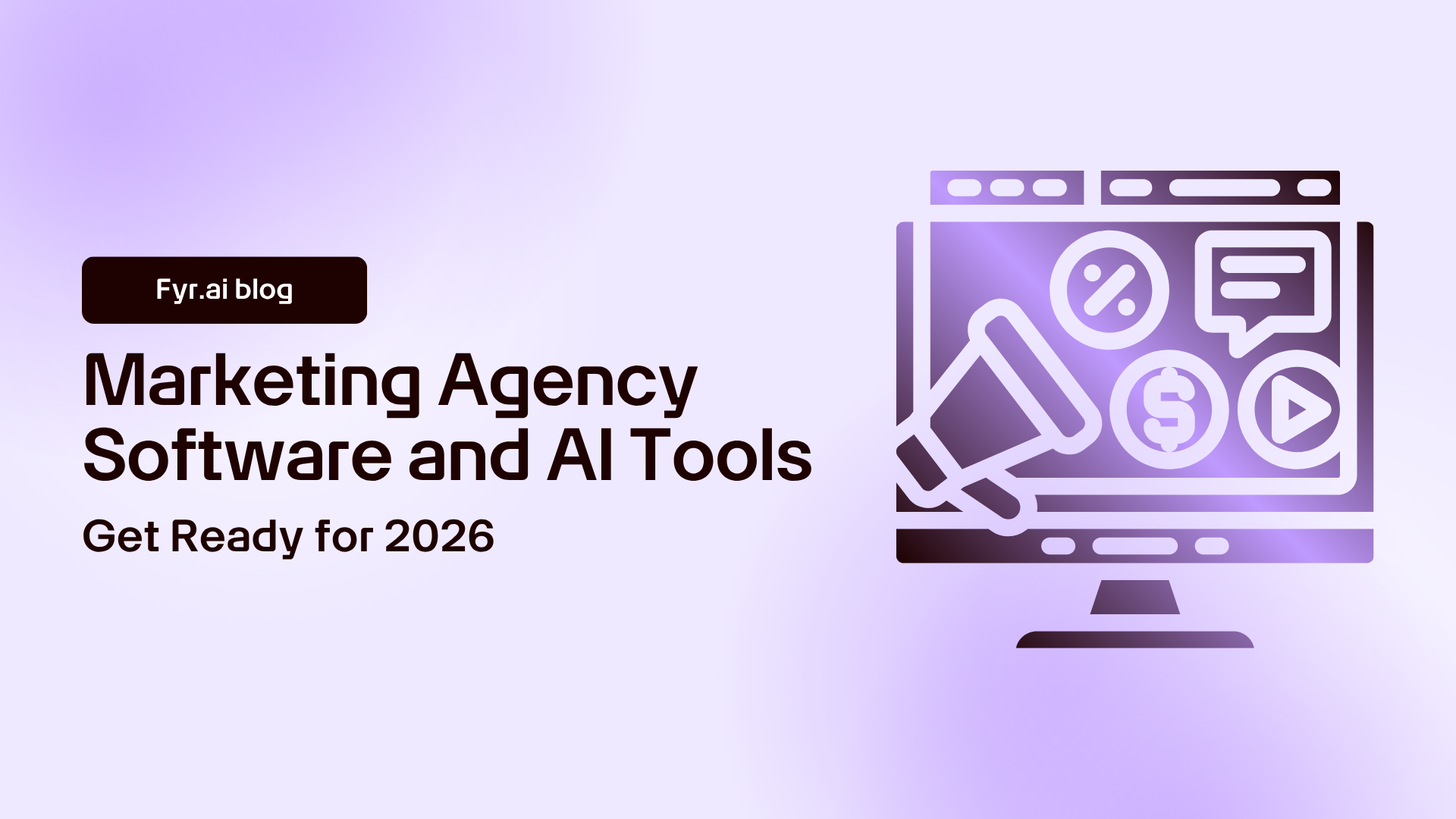Digital marketing campaigns move fast. Audiences shift, platforms evolve, and budgets get squeezed. That’s why campaign performance tracking isn’t a side task—it’s the foundation of modern marketing success. Without it, you risk wasting ad spend, missing opportunities, and struggling to prove marketing’s impact on business growth.
In this guide, I’ll break down how to manage campaign performance tracking effectively, combining best practices from experts, with Fyr’s own perspective as a martech pioneer delivering Automagic marketing.
Table of Contents
What Is Campaign Performance Tracking?
At its core, campaign performance tracking is the process of measuring and analyzing marketing campaigns across multiple channels to evaluate effectiveness, optimize future campaigns, and align marketing with business goals. It involves monitoring metrics that go beyond vanity numbers, ensuring that every marketing effort drives real outcomes. This process transforms data into insights, enabling marketers to refine strategies and maximize ROI.
Why Campaign Tracking Matters
Effective tracking provides clarity in decision-making and helps eliminate guesswork. By aligning tracking with business outcomes, teams can focus on metrics that matter, such as conversions, revenue impact, and long-term customer value. Without structured tracking, marketing often risks drifting into activities that generate little impact.
If you don’t know what you’re measuring, campaign performance tracking quickly becomes noise.
Juni Aursø, Marketing Intelligence Director
The Foundation: Setting Clear Campaign Goals
Before diving into data, define what success looks like. Without clear campaign goals, tracking becomes fragmented and reactive. SMART goals (Specific, Measurable, Achievable, Relevant and Time-bound) create the framework for successful campaign performance tracking.
Examples of SMART Goals
Marketers can tie goals directly to outcomes such as increasing conversions, reducing acquisition costs, or improving pipeline contribution. For instance, aiming to lift conversion rates from paid search by 15% in Q4 gives teams both a target and a timeline. Below are more performance marketing–focused SMART goal examples:
-
Lift conversion rates from paid search campaigns by 15% in Q4 through improved ad copy and landing page optimization.
-
Reduce customer acquisition cost (CAC) by 10% across Facebook Ads within six months by refining audience targeting and bidding strategies.
-
Increase return on ad spend (ROAS) to a 4:1 ratio for LinkedIn campaigns by optimizing creative assets and scaling top-performing ads.
-
Improve email campaign open rates by 20% by the end of the quarter using better segmentation and personalized subject lines.
-
Boost pipeline contribution from paid campaigns by 25% in the next fiscal year by aligning campaigns more closely with the sales cycle.
These SMART goals ensure that every marketing effort is focused on measurable progress and tied directly to business outcomes.

Choosing the Right KPIs (Not Vanity Metrics)
Clicks and impressions have their place, but they rarely tell the full story. The most effective marketing teams prioritize key performance indicators (KPIs) that directly reflect business growth. These include conversion rate, customer lifetime value (CLV), cost per acquisition (CPA) and return on ad spend (ROAS).
KPI Framework
By selecting the right KPIs, marketers ensure that campaign tracking translates to revenue outcomes and customer value. This avoids wasted time on vanity metrics and instead emphasizes sustainable growth. The table below demonstrates how KPIs can be structured for clarity:
|
KPI |
Why It Matters |
Example Goal |
|---|---|---|
|
CR |
Shows efficiency of campaign |
Lift by 15% in Q4 |
|
CAC |
Tracks acquisition cost |
Reduce by 10% in 2026 |
|
CLV |
Reveals long-term value |
Increase by $150 per customer |
|
ROAS |
Connects spend to revenue |
Achieve 4:1 ratio |
Centralizing Campaign Data Across Channels
One of the greatest challenges for marketing teams is the fragmentation of insights. Many companies use multiple platforms across social media, paid search and email marketing, which results in complex data silos. This makes it difficult to connect performance back to business goals.
Benefits of Centralization
By unifying data in one dashboard, marketers establish a single source of truth. This centralization not only saves time but also ensures that insights are actionable. Data centralization shifts campaign tracking from reporting into decision-making.
Tools That Enable Centralization
Marketers can use integration platforms and tracking software that consolidate campaign data from multiple channels into one interface. Examples include using Fyr’s Automagic dashboard or combining APIs from Google Analytics, ad platforms, and CRM systems. These integrations eliminate manual reporting and reduce errors.
Leveraging Campaign Analytics Tools
Raw numbers by themselves are limited. Campaign analytics involves collecting, analyzing and interpreting performance data to uncover trends and opportunities. This process helps marketers align campaigns with the customer journey and business outcomes.
Platforms like Google Analytics and Fyr’s dashboards and reports enable marketers to track website traffic, measure campaign influence and analyze revenue impact. By applying the right analytics tools, teams gain deeper insights into audience behavior and can optimize strategies accordingly.
Automating the Manual Work (Efficiency & Scale)
Manual reporting and campaign tracking often consume valuable resources. By automating recurring tasks such as report generation, competitor monitoring and real-time alerts, marketers save time and minimize errors. Automation ensures teams can focus more on strategy and less on spreadsheets.
Hypestudio research shows that a mid-sized marketing agency spent 22 hours weekly generating client performance reports. This disallows teams to scale their campaigns without increasing overhead. By eliminating repetitive work, automation transforms campaign performance tracking into a streamlined and sustainable process.
Tracking Website Traffic and Engagement Metrics
Monitoring website traffic remains a core element of campaign tracking. However, raw visitor counts don’t provide enough insight. Instead, focus on engagement metrics such as bounce rate, average session duration, and pages per session.
These insights reveal how well campaigns are driving meaningful interactions. For example, a high bounce rate may signal a disconnect between the campaign promise and the landing page experience. Improving these engagement signals ensures better alignment with the customer journey.
Behavior Analytics and Segmentation
Understanding your data and audience behavior is key to refining campaigns. Behavior analytics tools allow marketers to segment users based on demographics, interests, and purchasing behavior. This segmentation provides opportunities to tailor messaging and maximize campaign ROI.
Campaign Influence and Pipeline Contribution
Measuring campaign performance doesn’t stop at clicks or conversions. Campaigns also influence pipeline contribution, shaping how prospects move through the sales cycle. This requires close alignment between marketing and the sales team.
How to connect Marketing to Revenue
By tracking how campaigns impact opportunities and deals, marketers can demonstrate clear business impact. This shifts campaign performance tracking from marketing vanity to business-critical analysis.
How to Measure Campaign Success (Practical Framework)
Measuring campaign success requires more than a single KPI. A practical framework combines marketing KPIs, business outcomes, and customer journey insights. This holistic approach allows teams to identify both short-term wins and long-term growth opportunities.
A three-layered approach:
-
Marketing KPIs such as conversion rates and CAC.
-
Business outcomes such as revenue impact and pipeline contribution.
-
Customer journey insights to ensure alignment with key decision makers.
By applying this framework, marketers gain a 360° view of campaign effectiveness.
Avoiding Common Pitfalls in Campaign Tracking
Even experienced marketers make mistakes in tracking performance. Common pitfalls include overloading dashboards with irrelevant metrics, failing to review historical data, and ignoring the connection between campaign tracking and business goals.
If you want to avoid errors, the solution lies in clarity and focus. Establish clear metrics that connect directly to outcomes, and use regular audits to refine tracking systems. This ensures every metric serves a purpose in improving campaign performance.
Future-Proofing: Predictive & Advanced Analytics
The future of campaign performance tracking lies in prediction. Advanced analytics and AI tools can forecast campaign results, helping marketers allocate budget more effectively and maximize ROI. Predictive analytics offers a forward-looking lens that transforms tracking from reactive to proactive.
Predictive Insights in Action
By applying predictive analytics, marketers can anticipate how ad spend influences long-term customer lifetime value. This enables smarter allocation of resources and ensures campaigns are optimized for future campaigns, not just today’s performance.
Why Fyr Makes Campaign Performance Tracking Automagic
At Fyr, we believe tracking should feel effortless. Our platform connects data sources, automates manual reporting, and turns complex data into clear metrics. This approach eliminates fragmentation and makes decision-making faster.
We don’t provide just another campaign management tool. We give your team superpowers. By simplifying campaign performance tracking, Fyr enables marketing teams to gain control, save time, and focus on what matters most: growth.
With our technology and knowledge, we give your team superpowers.
Our Brand Promise
Conclusion: From Tracking to Transformation
Campaign performance tracking isn’t just about dashboards. It’s about clarity, alignment, and measurable business impact. With the right goals, KPIs, analytics, and automation in place, you’ll not only measure success – you’ll create it.
👉 Ready to make your tracking effortless? Book a demo with Fyr.
That’s the power of Automagic marketing.









